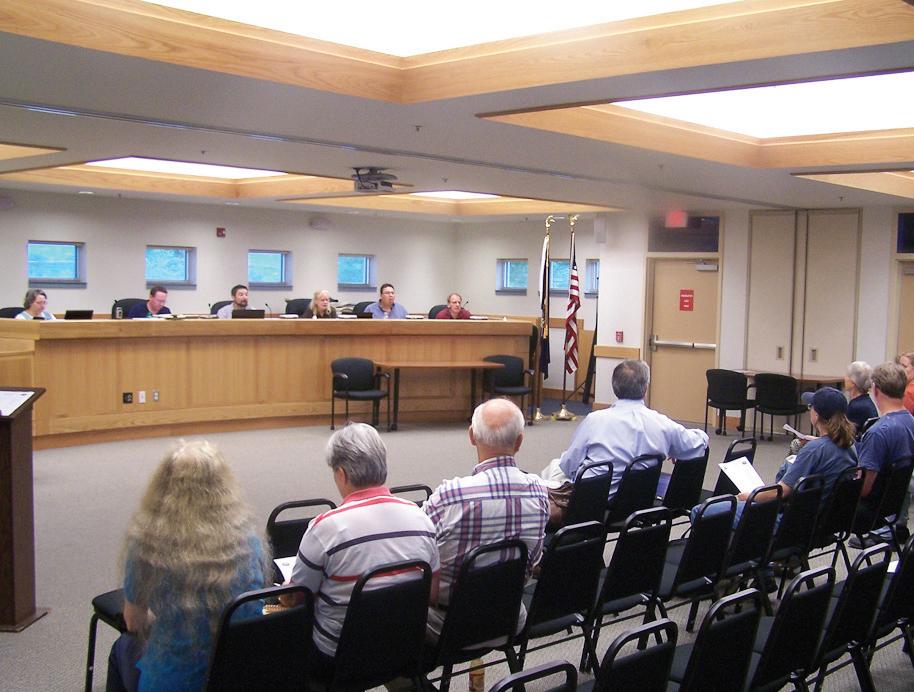
7 minute read
MAKING THE TOOLS WORK
Making the Tools Work: Market Contexts
The old adage in real estate is location, location, location. This is about how different market contexts can influence the cost of land and housing. For the purposes of this Toolkit, we have made some broad generalizations about a variety of local market contexts. However, there is no one-size-fits-all solution. Michigan is a diverse state with more than 1,800 units of government. There are different local politics, varied development patterns, and community priorities.
The contexts are described as: growth, transitional, and revitalization markets. Each local market has its own unique dynamics and characteristics which need to be understood by policy makers in order to wisely select from among the tools. We have done our best to generalize these market contexts with widely-available data, and to select a range of examples for illustration, with the recognition that the more local leaders can adapt these generalizations to the true conditions on the ground, the more effective these tools will be.
GROWTH MARKETS
These are residential areas that are experiencing new demand for residential housing. In most areas of the state, where growth is occurring, local communities are struggling to keep up with demand. They are experiencing a mismatch between the housing that is available and the prices that much of the local workforce can actually afford. As noted previously, when demand exceeds supply, housing prices have risen more quickly than local wages. This creates an affordability problem.
However, growth markets can be influenced by a number of factors. In regions like those anchored by Traverse City and Marquette, growth is being generated by seasonal and second homeowner demand, expanding regional employers and educational institutions, as well as higher income workers with a newfound flexibility to work remotely. High demand is heavily influenced by a strong sense of place and access to outdoor amenities and abundant water resources. In these places, the strong market makes density bonuses a viable tool to attract developers, and reduction or elimination of minimums for parking and dwelling unit size can maximize the share of limited space that is available for housing. Increasing the range of housing types, too, can allow for more compact development so that land resources are conserved.
In several neighborhoods within and surrounding communities like Grand Rapids and Ann Arbor, growth is being influenced by an influx of young workers and empty nesters who are all vying for a limited supply of housing in walkable, amenity rich neighborhoods. University students are also competing for older, traditionally less expensive housing stock, and tend to be much more willing to live in groups of four or more in a single home or apartment – often paying $500 or more per bedroom. Increasingly, low- and moderate-income households cannot afford the $1,500 to $2,000 per month rent that can be paid by groups of students or young adults.
In these communities are large, longdeveloped single-family zoning categories that have become extremely nuanced over time. Collapsing some of these districts into more flexible zones that permit a wider range of uses, lot sizes, and housing types will increase the capacity of existing neighborhoods at a manageable rate. Expanded administrative approval supported by police power ordinances to regulate nuisances may be needed in order to get them built.
It’s not just our larger cities that are growing in Michigan. There are several small towns and rural communities in the state that are feeling the pressures of growth – especially those on the fringes of larger metropolitan markets. Communities like Oxford, Middleville, and Vicksburg are increasingly experiencing new housing demand, often driven by job growth, that challenges the local identity of a small, rural community. Communities in this type of context are often currently planning for suburbanstyle growth consisting of mostly individual homes on larger lots. Yet, with the amount of housing demand these communities are experiencing, suburban growth patterns can quickly overtake the formerly rural environment and transform it into a chain of subdivisions where little of the original community identity remains. Lack of exposure to attractive, welldesigned attached housing formats can lead to resistance to their implementation from existing residents, so form and site standards can offer assurance that the community’s most valued physical characteristics will be preserved. Pairing these with expanded administrative approval and eliminated elected approvals allows the process to deliver those results within a predictable cost range for the developer.
TRANSITIONAL MARKETS
While there are quite a few local and regional growth markets in Michigan, there are even more housing markets in transition. This transitional market context includes those communities experiencing a shift in population that is not easily accommodated by the existing housing supply. For example, Sutton’s Bay in the Leelanau Peninsula has experienced a significant increase in housing despite a declining population, signaling an increasing reliance on seasonal and service industries. Very often, communities in these market contexts have not historically planned or zoned for housing types other than singlefamily homes.
Many single-family homes in these communities are aging and may require significant rehab or repair costs. In markets where there is a growing demand for seasonal homes, it is often higher-income earners buying these properties as second homes because they have the available resources to improve the properties to modern standards. Meanwhile, the local workforce is not able to compete for the limited existing housing stock and does not earn enough to support the cost of new construction. Allowing mixed uses and multifamily residential development in commercial districts reduces the transportation obligation imposed on the workforce and also allows for a realistic and sensible reduction in parking requirements, while missing middle formats can offer pleasant and fair housing options for service and essential workers with growing families.
In communities such as Grayling, Roscommon, and Lexington, on the other hand, expansion in the moderate- and middle-income manufacturing and production activities that underpin much of their employment base has not been matched by increases in population, suggesting that workers are enduring long commutes and that a whole range of housing formats would deliver a return on investment.
These communities are poised to become new growth markets and will shortly be faced with the conflict between preserving rural character and chopping it up into
Region Community
Pop. Change (2000-2019)
No. Jobs Change (2002-2017) No. Housing Units Change (2000-2019) Market Type
SW Vicksburg 42.0% -13.0% 35.0% Growth W Middleville 25.0% 14.0% 23.0% Growth NW Traverse City 7.0% 19.0% 8.6% Growth UP Marquette 6.2% -2.0% 5.5% Growth SE Ann Arbor 5.8% 6.6% 7.7% Growth W Grand Rapids 0.3% -5.9% 4.7% Transition/Growth NW Sutton's Bay -1.3% -63.0% 45.0% Transition SE Oxford -2.9% 88.0% 3.5% Growth C Sturgis -4.0% 8.4% 6.3% Transition/Growth SE Lincoln Park -8.3% -33.0% -7.6% Revitalization TH Lexington -8.5% 198.0% 6.8% Transition/Growth NE Roscommon -8.5% 157.0% 10.0% Transition/Growth TH Port Huron -10.0% -38.0% -2.3% Revitalization UP Sault Ste. Marie -18.0% 9.7% 1.9% Transition/Revitalization
lawns. These communities will benefit from planning for new compact neighborhoods with small lots, attached housing, and strong performance standards that allow for the integration of neighborhood commercial and service establishments. Revising "standard" development patterns also assists communities with lower costs of infrastructure and the ability to better manage service delivery.
There are also places where the number of jobs are holding steady in the face of population decline, pointing again to a mismatch between housing that is desirable and affordable, and the housing that is available. Sturgis and Sault Ste. Marie both fit this pattern, which is supported by data showing an increase in housing units despite a decrease in population. This is an opportunity for missing middle housing formats. Re-purposing space in commercial districts for residential use and a flexible approach to nonconformities can help achieve additional dwellings through adaptation rather than new construction.
REVITALIZATION MARKETS
Several market contexts in Michigan have experienced high growth trajectories in previous decades but have since lost significant population and are now dealing with legacy infrastructure, vacant parcels, and sometimes blighted homes. These market types, with communities that include regional anchors like Port Huron as well as inner-ring suburbs like Lincoln Park, can offer significant opportunities to increase homeownership and support various housing types. However, there tends to be a significant gap between the cost of new construction and local appraised values where little supply has been built in recent years. Because these markets are characterized by a simultaneous decline in jobs and population, they are often looking to attract new investment while also working to ensure that existing residents are not displaced. Pre-approved plans and expanded administrative review can help bring the cost of development down to address the appraisal gap, while a more flexible approach to nonconformities can help these communities make the most of their significant existing investments.
Google 3D image of Port Huron











